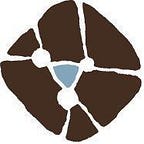How Public Art Exposed Class Tensions in San Francisco — a series of conversations about art, class and race that emerged from “Block by Block,” a public art project.
The Changemaker Who Realized Problems Couldn’t be Arrested Away
Reflections by Ilana Lipsett, Director of Social Impact for Tidewater Capital and Community Manager at The Hall
Lipsett’s role: Lipsett is a daily presence at The Hall, a food hall and drink venue funded by the development team of War Horse and Tidewater Capital to temporarily activate the space. The Hall’s purpose is to enliven the previously blighted block while the developer completes the years-long process for a larger retail/residential project on that spot. The developers made a financial contribution to “Block by Block” and The Hall lent electricity to power the lights for the installation.
Read series intro: How Public Art Exposed Class Tensions in San Francisco
Ilana Lipsett’s Perspective
In this neighborhood — at the junction of the tech revival corridor and the Tenderloin — we’re at this really awkward growing pains period and figuring out how to coexist. There are so many resources in this community, so how do we share the wealth a little bit?
I think public art has a huge potential to be a unifying factor. It starts to create this moment of strangers interacting.
[Block by Block] could have been a little bit more interactive — much brighter lights, maybe having music that works.( I know the speakers kept getting stolen.) But having something interactive about the piece that encouraged movement would be a good thing.
When there was programming at the bench — sewing classes or a band playing once a week — it was amazing.
There were people of all ages drinking coffee, or eating lunch, lying down or watching it. But the bench was the only place to sit in a big radius, so as soon as that programming went away, it made it attractive to people who wanted to sit and stay for a long time: some of them because they were dealing drugs; some just needed a place to sit.
But, there was a silver lining.
One day, I was walking my bike up to those bike racks by “Block by Block,” and I asked one guy sitting on the bench, “Can you watch my bike for me?” That was the beginning of our conversations. After that, he’d ask, “Where’s your bike today?”
After a month, he asked, “Do you have a job for me?”
I asked him what he was looking for and he said, “I don’t care, I’ll scrub the floors, I’ll scrub the toilets. I don’t care; I want to get out of the game.” And then another guy said he also wanted a job.
I crowdsourced to find some employers — because I didn’t know of many places that would be willing to hire people with potentially a [criminal] record. I got 35–40 jobs programs and put them on a flyer and started handing it out to people at the “Block by Block.” The cops were constantly here, and so I emailed the job brochure to Tenderloin Police Captain Teresa Ewins, and I said, “I know this is a crazy idea, but what do you think of having your officers hand this out instead of tickets? ” And she said, “I love it.” A couple weeks ago, she came up to me and said, “I’m hearing all the time that young people want jobs. Let’s do a jobs fair; can we do a jobs fair at The Hall?”
I know this is a crazy idea, but what do you think of having your officers hand this [job brochure] out instead of tickets?
With the first jobs fair, 175 people came through. We scheduled another one in August that attracted about 100 more people. We’re talking about doing more — focused on youth.
This post is part of a series of conversations about art, class and race that emerged from “Block by Block,” a public art project.
Let’s hear from the next stakeholder…
The Gatekeeper: Simon Bertrang
The Funder: Shelley Trott
The Neighbor: Wayne Shaw
The Guardian: Darryl Smith
The Artist: Marisha Farnsworth
The City Planners: Paul Chasan and Neil Hrushowy
The Entrepreneur: D’Mond Hill
Where does the story begin?
How Public Art Exposed Class Tensions in San Francisco
